-
Posts
2,620 -
Joined
-
Last visited
Posts posted by AnthonyB
-
-
Single chain perkos have been frowned upon by the Ironmongery Industry since the early 90's and not considered acceptable by them since the mid 2000's, but some government guidance still accepts them even though they don't meet current standards for a self closer - most only site standards related to fire resistance not performance as a closer.
-
Toilets are normally exempt from needing fire doors unless containing a particular risk (e.g. a boiler), a staff room if opening onto an escape route would probably need am FD30s door.
-
Is your fire alarm system set up for a simultaneous evacuation procedure with a common alarm that extends into the flats?
Unfortunately too many BCO's think Approved Document B is a mandatory document - it is not (It even says this: "There may be other ways to comply with the requirements than those described in an approved document. If those responsible for meeting the requirements prefer to meet a requirement in some other way than described in an approved document, they should seek to agree this with the relevant building control body at an early stage".)
There are plenty of flat conversions in older buildings where smoke control and a stay put policy are not viable to fit where simultaneous evacuation is used and the functional requirements of Building Regulations are met and completion issued.
Perhaps they are only a Class 2 Building Inspector under the new Building Control regime & only able/willing to stick to ADB - if you are departing from ADB significantly (which you can do) you may need a Class 3 or above even though it's a low rise building. -
On 27/04/2024 at 09:59, Guest Rach said:
Hi, I see there have been updated comments to this so thought I’d try for some advice. We have a 2 story block of just 3 flats with only a detector on each level in communal areas, looking for advice on how often this should be tested please? Recently taken over freehold and trying to manage regs with costs. Thanks
The first thing is - are they needed at all? In purpose built blocks domestic smoke alarms should not be fitted in common areas and a commercial grade fire alarm system is also not required except if there are automatic opening vents when smoke detectors (no alarms or call points) are required.
If your block is a conversion and on a full evacuate policy with a fire alarm system that covers both common areas and flats then fair enough.To your question:
- Domestic smoke alarms: Monthly test using test button, no servicing unless linked to a telecare system- Commercial alarm system: Weekly test using a different call point each week and 6 monthly service by a competent person.
A decent FRA from someone with residential expertise is important - I have a lot of resident management company clients who have previously paid out for or be told to provide a whole host of measures that aren't actually required & in some cases even counterproductive, especially in small blocks
-
Mrs
in Fire Exits
You are correct that the exit doors should be panic proof in all situations - the preferred system is delayed action panic bolts - press the bar, an alarm sounds and after 15 seconds the door releases (seen in any Costcos).
The situation you describe is very common yet rarely picked up as an issue, my worry is it will take a real incident for people to take notice. -
I can only assume the fire risk assessment has identified insufficient fire separation between your flat and those above to require all this - you should request copy to see the rationale behind it.
-
Yes or it wouldn't have been built that way.
-
If it's in the FRA it would relate to common areas for which the Local Authority does not have jurisdiction (they cover inside dwellings)- the Fire & Rescue Service are the enforcing body via their Business Fire Safety department (not always the local station as they may not have a base there).
Anything serious that could lead to a danger of death or serious injury would attract enforcement action if not completed. They will not be bothered about lesser breaches which, whilst the risk assessor has to correctly identify to make their assessment legally sufficient, aren't severe enough to reach the enforcement threshold. -
On 22/04/2024 at 17:49, Guest Stephen said:
Hi, newbie with little experience. I'm quite interested in the doors not closing fully due to pressure. Had a few sites I worked at with the same problem. The pressure kept changing each day so when you adjust the closer the door use to slam hard on occasions.
I was wondering if compliment to the fire door manufacturer instructions, if a intermisent grill at the bottom of door 3 would be acceptable or would this leave an issue open for cold smoke?
You've answered your own question. As a front door has to be an FD30S with cold smoke seals an intumescent grille is not suitable as it gives no cold smoke protection, you would need a combined fire and smoke damper and associated detection which would be unrealistic.
-
Sometimes they are put in, but as not part of a protected entrance hall you don't have to.
-
Class A fires aren't electrical, they are ordinary solid combustibles, wood, paper, textiles, etc.
Class B is flammable liquids
Class C is flammable gases (but you don't have to cover these as ordinary users aren't meant to tackle gas fires due to the explosion risk, you just shut off the supply)
Class D is reactive flammable metals (sodium, magnesium, etc)
Class F is cooking oils.
Electricity isn't a fire class as it isn't a fuel, just a safety consideration when choosing extinguishers.
The basic level of cover a premises requires is for Class A fires and the number required is based on floor area. For example a 200sq.m. floor gets a floor fire rating of 13A (multiply the floor area by 0.065)
Extinguishers bear a test rating dependant on the size of fire they can put out - a common test rating is 13A so for a 200sq.m floor you would need one, 400 sq.m. 2, etc although you can use high performance extinguishers - some are rated to 27A.
The main risks in a hair salon are Class A (solids) and the risk where the solid item on fire is electrical, usually the amount of liquids, whilst present, is negligible.
The traditional way is with a water spray extinguisher for the Class A risk and a CO2 for the electrical (CO2 also has a Class B rating so deals with any flammable liquids). Most salons, based on size only require one of each or two of each at best.
https://www.safelincs.co.uk/ultrafire-2kg-co2-fire-extinguisher/
https://www.safelincs.co.uk/ultrafire-6ltr-water-fire-extinguisher/
Government guidance encourages the consideration of using multipurpose water based extinguishers to simplify things (you can get water based extinguishers safe in electrical fires) and water mist is another option (Good on Class A, F & electrical plus can deal with small Class B risks):
https://www.safelincs.co.uk/6-litre-water-mist-fire-extinguisher/If you want to avoid the hassle (& sales pitch) of an extinguisher supply & maintenance firm you can also get long life extinguishers which the user can inspect:
https://www.safelincs.co.uk/britannia-p50-6ltr-water-mist/ -
What I'm saying is that you don't - there is no risk for which they suit. The only reason you see them where there are no frying appliances or hobs (in some situations just a sink & kettle) is the sales tactics of some service companies or end users not knowing any better.
-
No fixed duration, just long enough to be able to check all fittings have illuminated. For example if an installation has separate test switches for each room, corridor section, stair, etc then it could be very short, e.g. a small room with one or two fittings and a test switch might only take a few seconds, or longer, e.g. a building with no test switches or just one at the main incomer might need 10 or 15 minutes to be able to get around al areas.
-
If you are selling them or don't know any better, then a sink and a kettle is a 'kitchen' and needs a fire blanket even when no risk exists where it would be practical, As long as there is suitable provision of extinguishers safe on electrical equipment nearby you would be fine.
-
Access control doesn't need a fire alarm interface if not part of means of escape, the last thing it should do is failsafe - the main issue with the use of this type of lock is that it most cases it affects the integrity of the door & does meet the appropriate standard.
On an existing installation from a risk assessment point of view the main question is is will it keep the door shut for the intended duration of the fire door.
-
If it's a 2010 build and is as you describe (& the front doors are into internal common lobbies/corridors/stairways) then it was never compliant with Building Regulations as it's recent enough to have required 4mm(ish) gaps and intumescent strips and cold smoke brushes.
The 'no strip' notional door guidance is aimed to avoid unnecessary cost burdens on residents of small blocks who have fire doors to older standards but in good condition and compliant with the standard at the time of installation.Are there channels in the door frame where the strips should have been fitted or did the builders not even get as far as the correct frame to accept strips?
If it's a small block it may be seen as a lower risk issue (especially if working closers are fitted) but it wasn't right originally and is symptomatic of the slack standards of the 21st Century building industry and the ineffectiveness of the building control process - if an obvious defect like the doors got through, I'd want to carefully investigate fire stopping & compartmentation as these hidden issues are usually even more often poorly completed! -
-
There are no requirements for it to be fire retardent
-
If you use this fire stopping product selector it will tell you what you need to use:
https://www.hilti.co.uk/content/hilti/E1/GB/en/business/business/engineering/fire-protection/firestop-selector.html -
Assuming you are in the UK it's all in here https://www.gov.uk/government/publications/fire-safety-approved-document-b
The sketched building appears as if it is below the height in England for mandatory sprinklers (but not so in Wales)
If you were sprinkler protecting the building it would usually be just the flats not the common circulation areas.
-
Possibly 'code hugging' rather than taking into account the actual risks & other mitigating measures (e.g. fire detection & warning system to a higher category than usually required)
When you say 'surveyor' who exactly are they are what are they doing? Is it a Building Control matter, insurance visit or fire risk assessment? There are insurers and fire risk assessors who specialise in heritage buildings and will take a holistic view, sounds like you need one!
-
Manufacturer's instructions, based on their certification test data, take precedence. In the example linked below, it allows a gap up to 10mm between frame & wall, states what the gap must be filled with - but does NOT say there MUST be a gap, only giving guidance should there be one. Therefore it is reasonable to assume no gap is permissible (check the install sheet for the particular door you are fitting though or better ring their support line)
https://mbp.co.uk/wp-content/uploads/2019/02/PREMDOR-CF195-installation-guide.pdf -
Even in a large hotel the actual hotel bedroom doors don't need to have fire door signs, it's a specific exemption in Building Regulations that can reasonably be applied under the Fire Regulations.
-
On 30/03/2024 at 20:16, Guest Anne said:
Where are you? I can legally dispose of these. It's a bit too rusted for preservation in my collection but I can still get rid of it. If you are too far away then some (not all) local authorities waste centres take them.
Someone has messed you around on eBay as dozens of these are listed on eBay. Put it on eBay again & Facebook Marketplace for a penny as an item for upcycling - people turn them into lamps, toilet roll holders, minibars, etc. Otherwise find a local extinguisher company that has a waste license to take it.

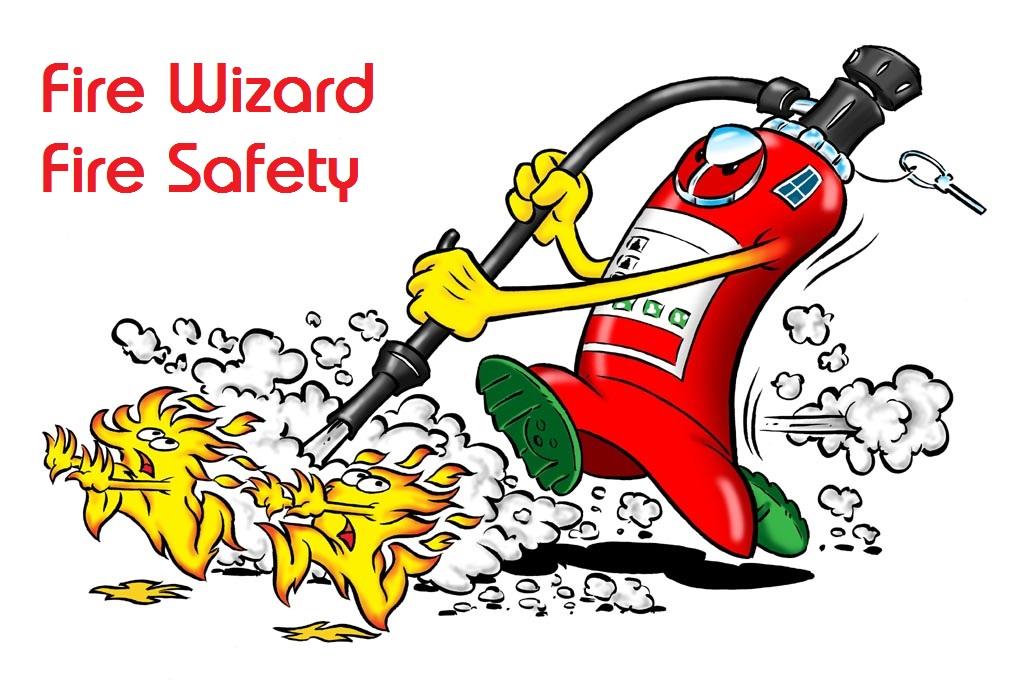

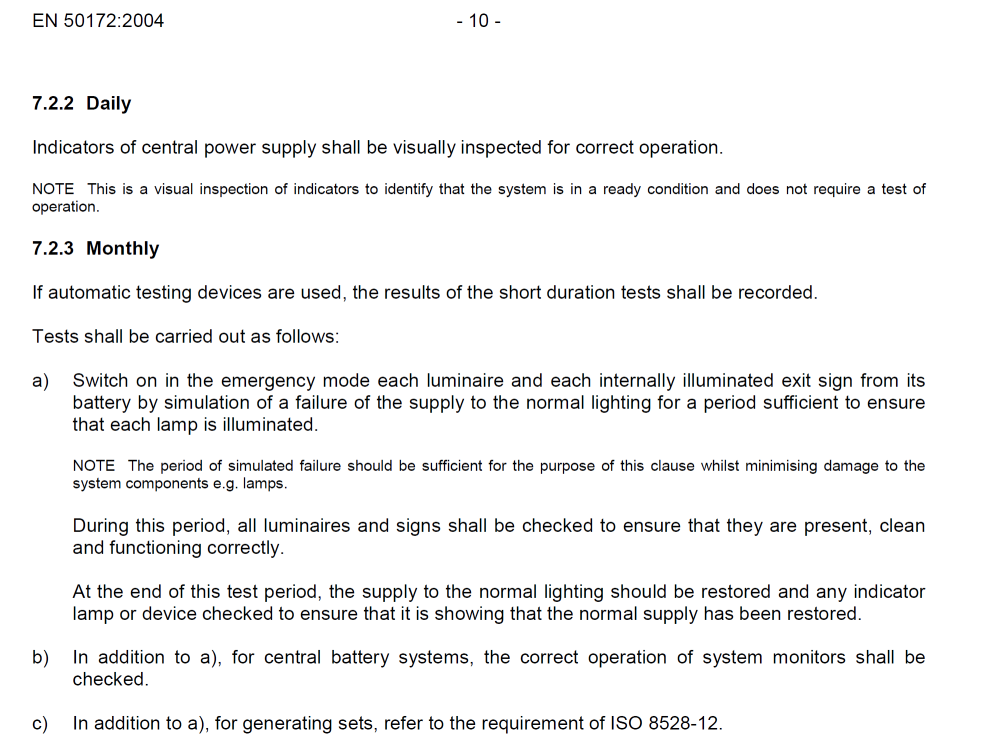
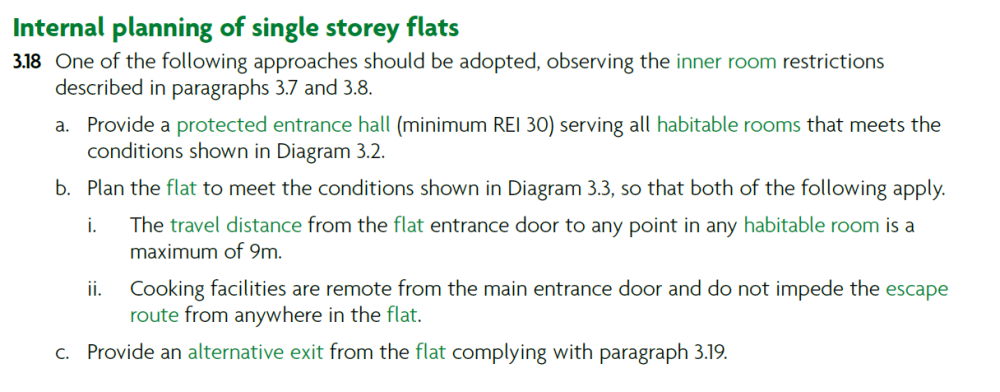

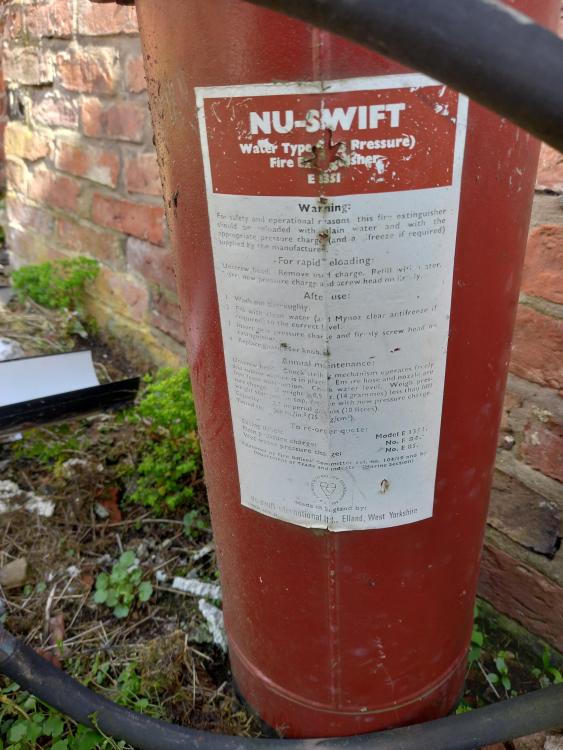
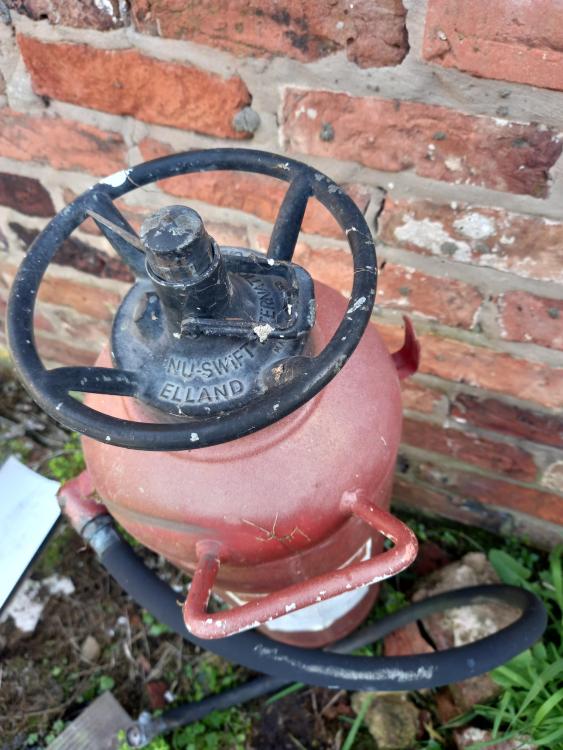
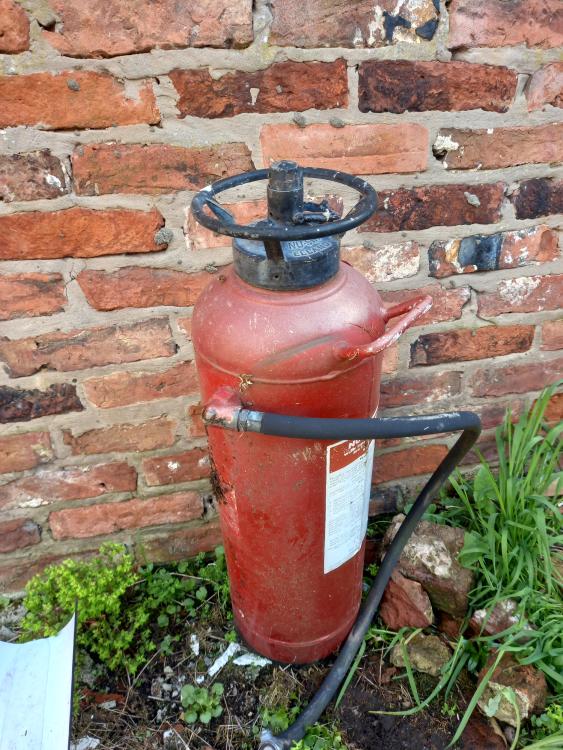
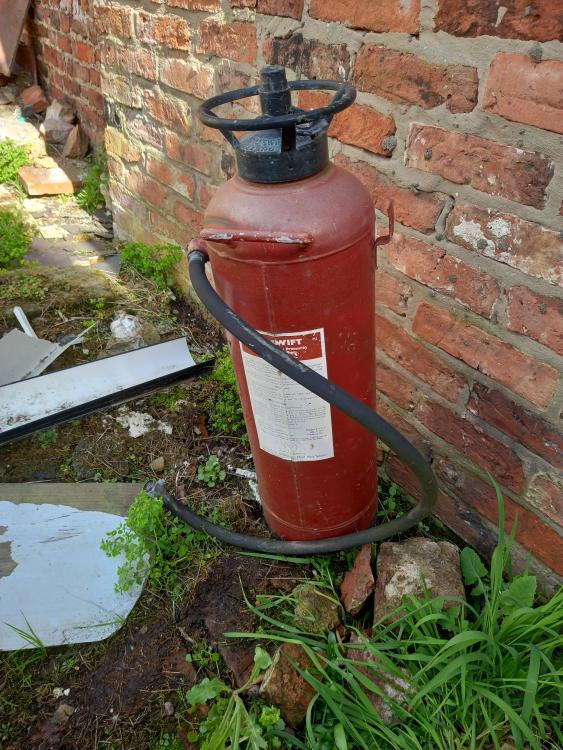
Fire door regulations of pre 2000
in Fire Doors and Accessories
Posted
It did exist since the 80's - but it wasn't (& still isn't) mandatory to be certified and marked.